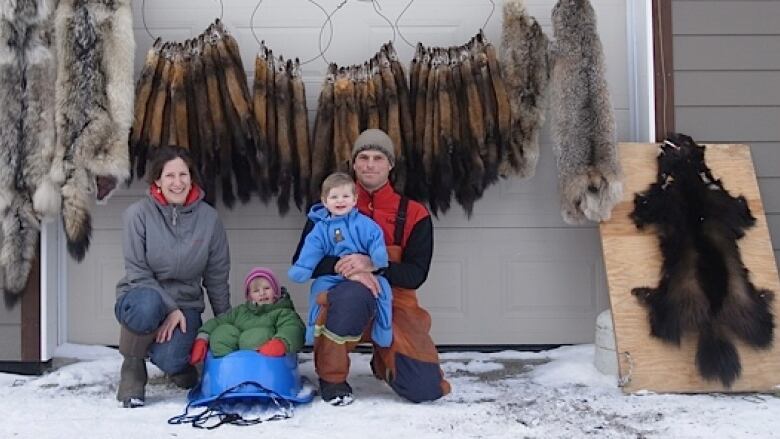Low fur prices mean slim profits for Yukon trappers
'We figured out that I was getting less than a dollar an hour,' says one trapper

It's shaping up to be anotherdisappointing winter for Yukon trappers hoping to profit from the furs they harvest. Auction prices for many furs have beendown againthis year.
Andy Preto, who with his partner works a trapline near Mayo and another near their home in Haines Junction,said it's getting harder to make even a slim profit.
"We still have to cover our costs," he said. "We have to cover our gas costs, and maintenance of the gear we use, and purchasing new gear."
"We've tried holding over until the prices increase, but you can only hold [fur]for so long before certain chemical changes happen in the leather and the fur themselves."
Preto's pile of marten furs sold at auction last month. They went for an average of $70 per fur a big drop from the $180 he was getting just a few years ago.

Ryan Sealy, the Yukon government's trapper education coordinator, said several factors have driven fur prices down.
"Yukon furs sell well in most years, but they do fluctuate with the world market and the economy," Sealy said.
Russia and China have been driving demand for furs in recent years, Sealy said, but their economies are now struggling. The wild fur market has also been effected by over-production of ranched furs.
Then there's the weather.
"Cold weather is what sells fur more than anything else," Sealy said, and Russia still a major consumer of wild fur has had a mild winter.
"Cold weather matters quite a bit,and it just didn't happen this yearfor the second year in a row."
No six-digit income
Sealysaid there are about 360 active traplines in Yukon, and roughly the same number of licenses granted. He said few Yukon trappers make an active living off the work. At best, trappingprovides a supplementary income.
"It's by no means a six-digit-income lifestyle," said Brian Melanson of the Yukon Trappers Association. "You know, if you can make even $15,000, you're doing pretty good."
Melansonis up in Old Crow this week, teaching a fur handling course to about 20 trappers. He said it's important fortrappers to learn what the auction houses want,and prepare furs properly, to fetch the best price.

But healsostresses that trapping in Yukon will always be more of a lifestyle than a job.
Andy Preto agrees. Besides trapping, he works as a teacher and he recently gave his students a math problem they had to figure out how much money Preto made off trapping,factoring incostsand hours of work.
"We figured out that Iwas getting less than a dollar an hour, wage. They looked at me like I was crazy."
"We do it because we like it," he said.












_(720p).jpg)


 OFFICIAL HD MUSIC VIDEO.jpg)
.jpg)



























































































